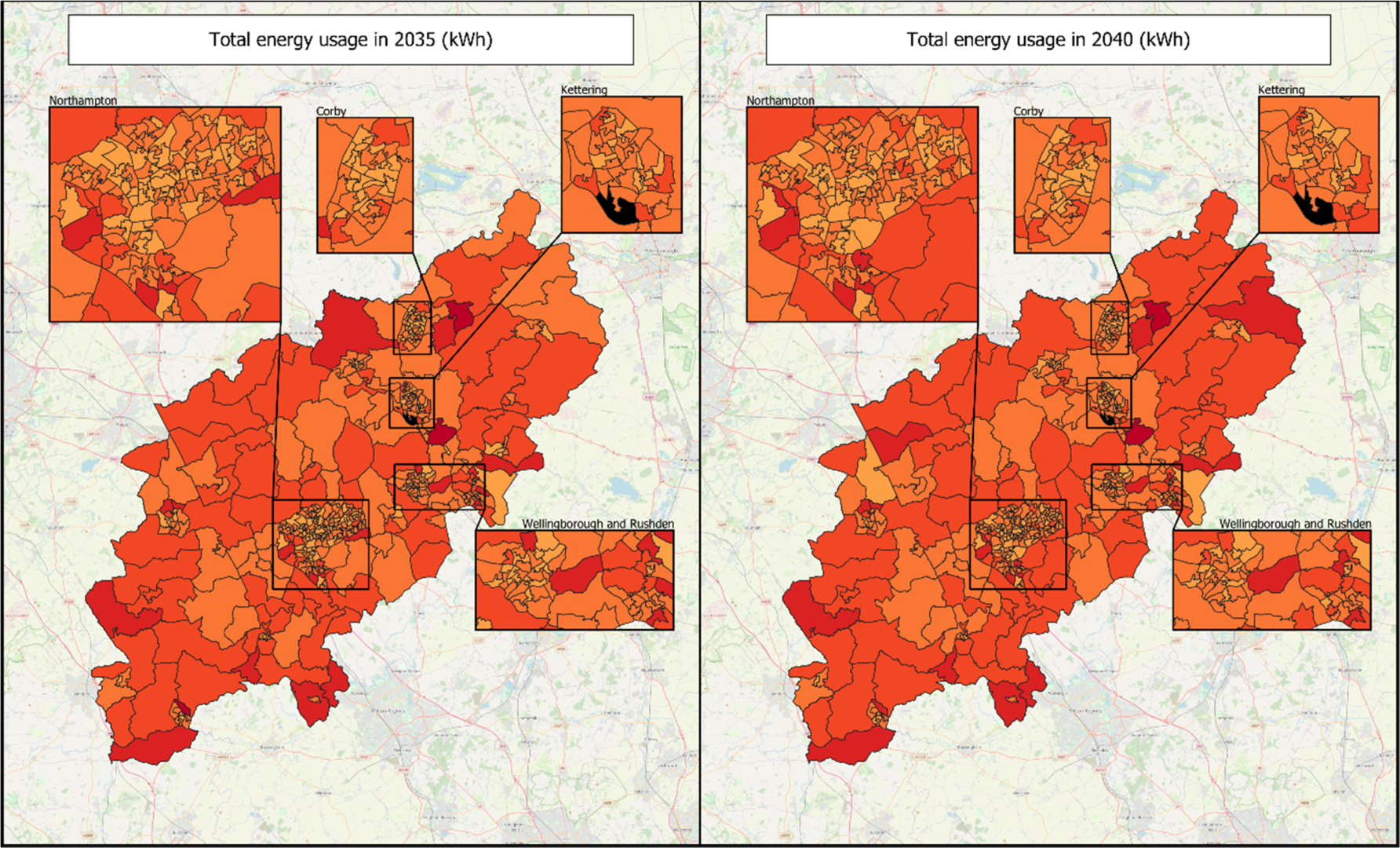
North Northamptonshire to Net Zero
Case Study
The Challenge
Electric Corby commission Cenex to forecast electric vehicle uptake and the required publicly accessible infrastructure for Northamptonshire using the EVEREST model.
This included:
- Forecast the number of electric vehicles in each Lower Layer Super Output Areas (LSOA) each year.
- Forecast if, and when, each vehicle will need to charge and how much energy they require.
- Determine whether the vehicle will need publicly accessible infrastructure to charge.
- Calculate how many chargepoints are required to meet this demand.
- Calculate the energy requirement from these points.
The Development
Cenex used vehicle ownership data from Department for Transport and social demographic data from the Census to forecast EV ownership uptake and assigned each of these vehicles a daily profile from National Travel Survey data, then took Field Dynamics data to determine the proportion of homes in the LSOA with a driveway, and therefore will not need publicly accessible infrastructure.
The Result
Cenex presented a realistic worst-case scenario, detailing how many EVs will need to charge on publicly accessible infrastructure, how many chargepoints are required and how much energy will be used.
The geographical distribution of the chargepoints correlates strongly with the number of EVs in each LSOA without a driveway (therefore without access to a home charger), with around one chargepoint required per 25 EVs without a driveway.
